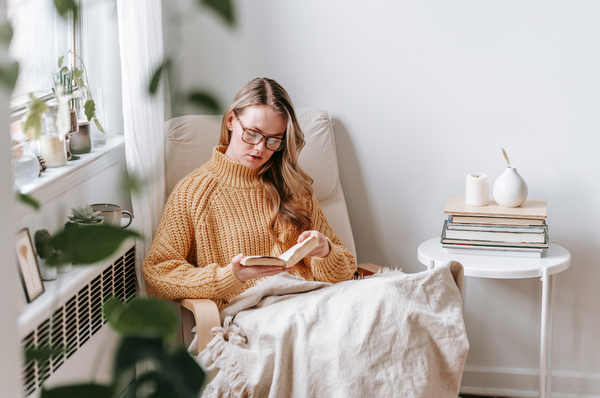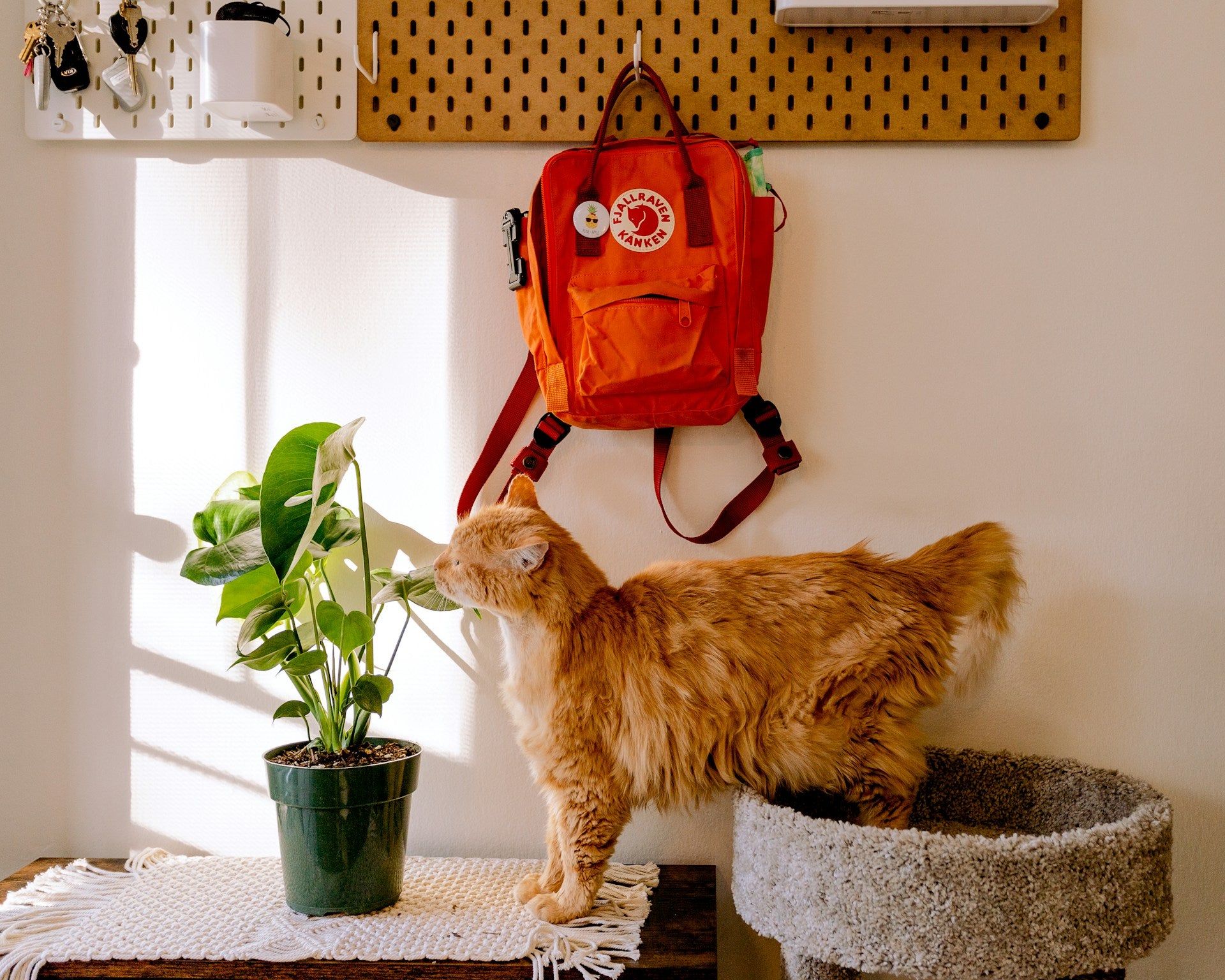Life throws its fair share of curveballs. After a day of meeting work deadlines, fulfilling roles and obligations, and dealing with the ever-present, often unfortunate news cycle, you just need somewhere to retreat and recharge with the things that bring you joy. Ideally, such a place is our home.
But sometimes, we feel our homes aren't the sanctuary we seek. The feeling may be undefined, simply characterized by a sense of lacking. We may not be as comfortable or connected in our spaces or feel like they don't bring us as much joy as they could.
So, we rethink the four walls around us and try to make it a nicer place to dwell in. This inclination to improve our homes suggests a fundamental need to design our spaces for our well-being. We try to make it functional. We bring in things that look good. We move things around and decorate. But is this enough?
What creates a space that aligns with and nurtures our well-being?
Home as a Happy Place
Cambridge Dictionary simply defines well-being as the state of feeling healthy and happy. Many things influence well-being, but the time spent in our homes is one valuable aspect, considering that we spend a significant amount of time here. It makes sense to approach our home as a space that elicits happiness if we’re to make it better for our well-being.
The Science of a Happy Home, a 2020 study by architectural and design firm Resi, can help provide insight into what makes a happy home, outside the tenets of aesthetics.
The report, based on data from 40,000 respondents, identified six key characteristics of a happy home. Foremost, a home has to be secure and nourishing. Do you feel safe in your home? Does your home help you thrive and be healthy?

Next, a happy home should also be adaptable to our changing needs. The report shows a correlation between high levels of home satisfaction and the ability to make changes in room use. For instance, with more people working from home post-pandemic, living spaces may need to include work areas. Are you able to move things freely at home? Can your furniture serve more than one purpose? Are you able to make the best use of your space?
Another key aspect of a happy home is that it promotes relaxation and fosters connections with those we live with and the world around us. Ideally, such a space is also a reflection of us, where we are free to express our intrinsic selves.
Home as Your Reflection
Much to do with happiness in our home is the intention we have for our space, and how it works for everyday living. But we may lose our intention when we get too excited to create spaces based solely on aesthetics.
While benchmarking other people's homes can help us create visually pleasing spaces, it's also important to remember that your home is a reflection of yourself and those you live with.
"Not only do beautiful houses falter as guarantors of happiness, they can also be accused of failing to improve the characters of those who live in them." - Alain De Botton, The Architecture of Happiness
The Science of a Happy Home suggests asking ourselves certain questions as simple as: "What about your home feels most special to you, and how often are you reminded of that?"
Creating a space that reflects our true selves helps us feel comfortable and relaxed. Expressing our identities through sentimental items and design quirks can be a way to achieve this. By prioritizing our needs and intentions over following trends, our spaces develop an authentic personal charm, distinct from other people's homes. This very quality has the potential to positively contribute to our well-being.
For example, check out this home that was featured on NEVER TOO SMALL's YouTube channel. The open-air living space may not appeal to everyone, but it provides a sense of spaciousness and freedom that is important to the residents. The home was designed with their specific needs in mind, resulting in a truly unique living space.
Home as a Personal Space
Creating spaces that accommodate needs and preferences presents a challenge, especially when we share them with other people. So, we compromise to ensure that everyone's needs are met. Despite this, it is still important to designate a space, even if accessible to others, where you can kick back and freely express yourself.
Your personal space can be a simple spot in the living room where you can sketch. Or, it can be a luxurious bathroom where you can do extended bath rituals. It's all up to you. What's key here is that it's a place designed to practice self-care.

Aside from sleeping, what do you do to unwind and recharge? If you find that going out and reading at cafes, relaxes you, perhaps you can recreate such ambiance at home. Set up a cozy reading nook by a window with an armchair, side table, and floor lamp. Having this little nook in your immediate space allows you to easily enjoy moments of indulgence whenever you need a break.
Home Is Beautiful
When creating living spaces in our homes, it is crucial to prioritize our needs and intentions. But it is also important to consider beauty. Beauty does matter and the structure of our immediate surroundings can also influence well-being.
Donald H. Ruggles, author of Beauty, Neuroscience & Architecture: Timeless Patterns and Their Impact on Our Well-Being said, "...beauty originates as an intuitive, emotional response in our ancient brain as the recognition of a pattern that has the potential for pleasure.”
We are naturally drawn to symmetry. The clearer and more familiar the patterns, the more at ease our minds become. While we won't delve too deeply into the science of symmetry, what's key here is that balance is important, and that beauty may reside where there is harmony.
Alternatively, embracing imperfections and asymmetry can be just as rewarding as striving for balance.

Wabi-sabi is a concept from the Japanese culture that focuses on appreciating beauty in imperfection, influenced by Zen Buddhism's principles of simplicity, respect for daily life, and connection to nature.
"Wabi" expresses imperfection and austere beauty, while "Sabi" relates to impermanence and the passage of time. As a credo to everyday life, wabi-sabi encourages the practice of mindfulness and the appreciation of flaws and natural aging.
To make our homes beautiful, symmetry can be applied as balance in our choice of a color palette, balance in the way we arrange furniture, or balance in the way we decorate. Applying wabi-sabi in our home, meanwhile, is more about how the space makes us feel, with the primary focus on creating a peaceful and authentic home. This can be expressed by:
- Boosting connection with nature by choosing things made from natural materials and displaying houseplants
- Choosing items that age well, mindfully prioritizing quality over quantity
- Decluttering and organizing for peaceful flow and rest from visual stimulation
Takeaway
To enhance our happiness and health in our living spaces, it might pay to rethink the way we see our homes, prioritize our inner authenticity, and reflect on how we express ourselves. By being mindful of our choices, we can introduce changes that enhance our well-being and bring us greater joy at home.
Sources:
- Resi | The Science of a Happy Home | Report 2020 (buildpathio.s3-eu-west-1.amazonaws.com)
- ‘The Architecture of Happiness’ - The New York Times (nytimes.com)
- Can you design happiness? (businessofhome.com)
